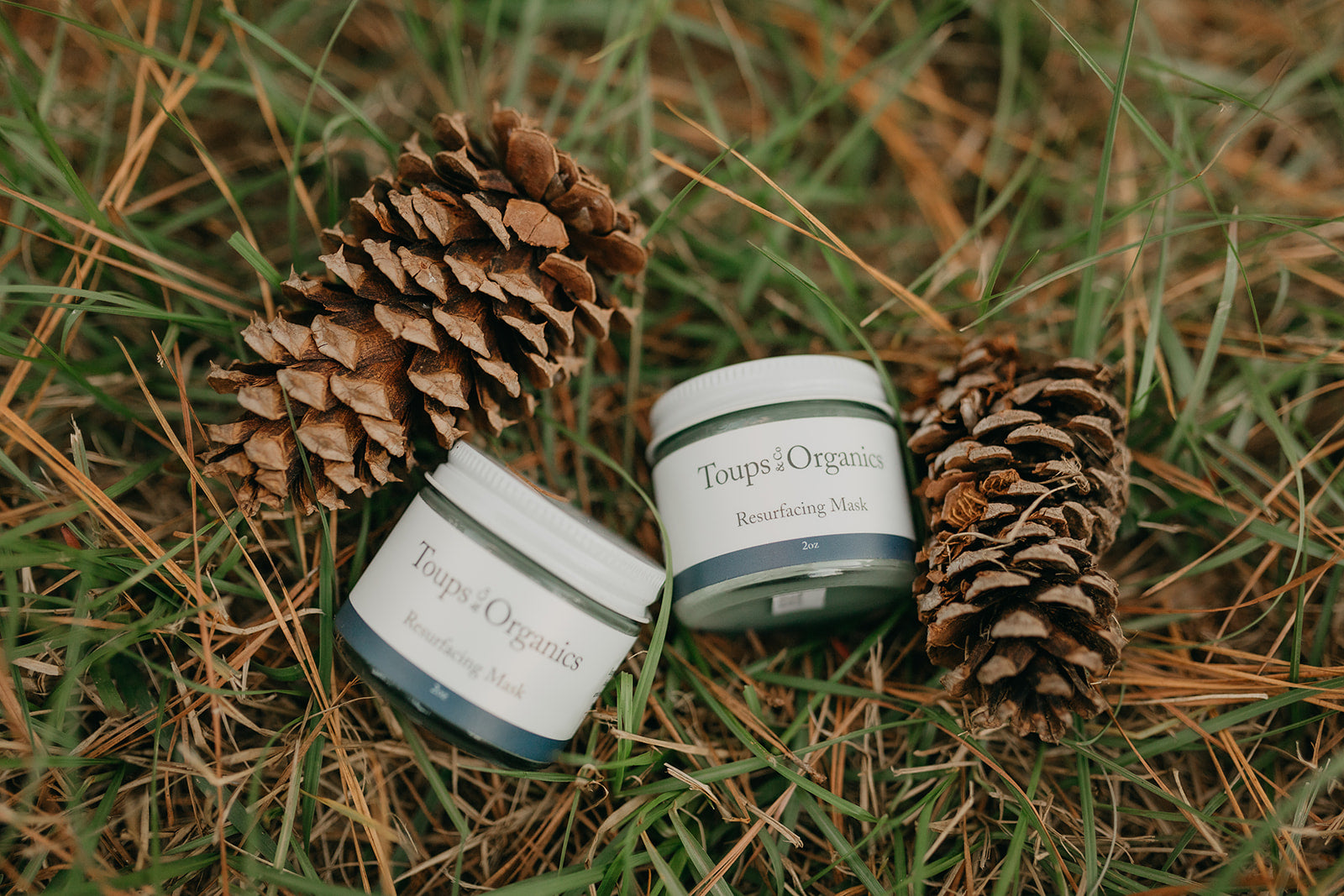If there’s anything we recommend being proactive about, it’s checking skincare ingredient labels. The safety regulations for personal care products in the United States are minimal at best—meaning, our well-being is in our own hands. In order to protect ourselves and our families, we need to understand what’s on the back of the bottle.
Seems simple, right? In theory, sure.
But in practice, understanding ingredient labels can feel complicated and foreign.
One ingredient we get lots of questions about is glycolic acid. It’s a commonly used skincare ingredient (or exfoliant) that’s part of a family of acids called alpha hydroxy acids (or AHA fruit acids).
Understanding AHA Fruit Acids and Why We Use Them
Fruit acids are one of the few mainstream skincare ingredients that can be all-natural. Ideally, they come from sugar cane (think: sugar scrub) or acidic fruit extracts of oranges, lemons, and blueberries.
The goal is to offer a gentle exfoliation that nourishes the skin barrier while removing dead skin cells—for a cleaner and fresher appearance. Glycolic acid is particularly well-known for this, and it’s usually recommended for acne, scarring, uneven skin tone, or simply for a deep cleanse.
The benefit of using natural fruit acids in skincare is that they often come with built-in antioxidants and anti-inflammatory effects. These are natural benefits we get when using fruit to nourish our skin barrier. Plus, when used responsibly, they shouldn’t expose you to any toxic chemicals.
Glycolic Acid + AHA Fruit Acids: Are They Natural or Synthetic?
Just like other mainstream skincare ingredients, we need to dig a little deeper to get the whole story on glycolic acid and AHA fruit acids.
We should assume that most AHA fruit acids made by mainstream makeup and skincare companies are synthetically produced. This is simply because they’re cheaper to make when they’re highly processed and they don’t expire as quickly.
Glycolic acid, for example, goes through a manufacturing process that requires formaldehyde, carbon monoxide, and high-pressure temperature production. Not only is it an environmental concern, but it’s not something we should put on our skin.
When using AHA fruit acids for skincare, it’s important to consider your source. We recommend you buy from trusted companies that don’t compromise on ingredients and are transparent about their AHA fruit acid process and manufacturing.
Benefits of AHA Fruit Acids
When naturally created, AHA fruit acids offer a number of benefits that help nourish and revitalize the skin. They’re a gentle alternative to chemical face peels and offer antioxidants and anti-inflammatory effects.
-
A Gentle Alternative to Chemical Peels
Chemical face peels and microneedling are considered the gold standard for achieving smooth skin. But these procedures are invasive and can be unnecessarily harsh, especially on the most delicate areas of your face.
All-natural AHA fruit acids offer a gentle alternative. They exfoliate at a deep level—preparing your skin to soak up nourishing ingredients—but don’t overdo it.
Sure, you’ll need a few more weeks to see results with AHA fruit acids than with chemical peels, but your skin will be more protected. You won’t need to avoid the sun or be especially careful.
-
Helpful for Hyperpigmentation
If you’re concerned about hyperpigmentation or uneven skin tone, natural AHA fruit acids may be able to help. Their gentle exfoliation removes dead skin cells while encouraging collagen production and cellular turnover. Over time, you may notice a gentle resurfacing effect: more even skin tone and fewer hyperpigmentation spots.
-
Removes Dead Skin Cells for a Deep Cleanse
Exfoliation is an ancient skincare practice that works to remove dead skin cells, dirt, and excess oil from the body. (You haven’t lived until you’ve tried a Turkish exfoliating glove.)
When too many dead skin cells are present on the face, moisturizers and serums may be less effective, since they have to get through dead skin cells to revive fresh skin cells. That’s why we recommend exfoliating your face a few times per week to get a deep cleanse and promote skincare absorption.
-
Full of Antioxidants for Cell Turnover
Antioxidants get to the root of skin concerns by gently nourishing the cells and scavenging free radicals. When directly applied to the skin, they can help nourish from the outside in—promoting natural collagen production, reversing cell damage, and turning over dead cells for timeless and glowing skin.
Highly processed AHA fruit acids may not contain any leftover antioxidants, especially if they’re made from synthetic ingredients or heated at high temperatures. This is why it’s so important to ask questions and find a quality skincare source.
-
Collagen Boosting Properties
AHA fruit acids don’t create collagen, but the exfoliating effects can promote collagen production. This combined with a diet rich in animal fats, gelatin, bone broth, and grass-fed beef collagen can boost your body’s natural production of collagen. It’s typically more effective than applying collagen-based skincare.
AHA Fruit Acids Are Best Combined with Other Natural Skincare Ingredients
AHA fruit acids exfoliate and polish the skin, leaving a blank canvas for serums and moisturizers to be most effective. While fruit acids remove dead skin cells, other ingredients like grass-fed tallow, raw honey, blue C-phycocyanin algae, and kaolin clay work to detox, nourish, and revive new skin cells.
Anytime you use AHA fruit acids for skincare, consider them a complementary ingredient. They should be paired with highly nourishing, whole ingredients that contain vitamins and minerals—essentially, the building blocks of vibrant and healthy skin.
Combine AHA Fruit Acids with Nourishing Building Blocks for Healthy Skin

